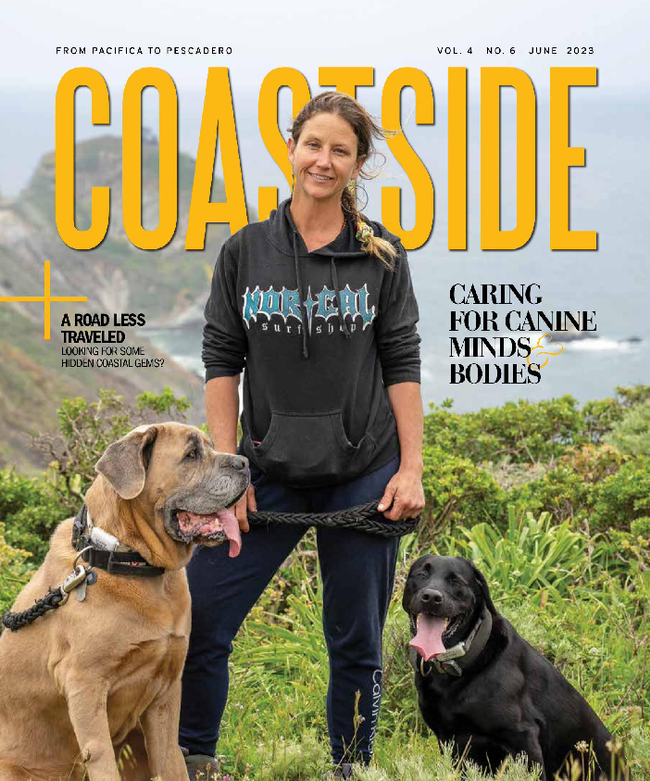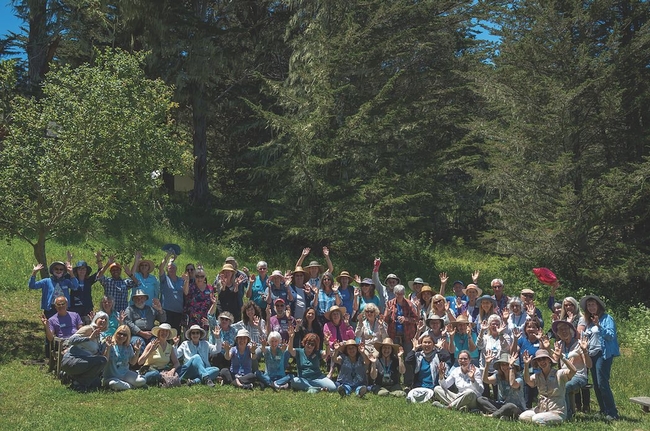- Author: Maggie Mah
- Editor: Cynthia Nations
This article was originally published in Coastside Magazine on
Since 2016, Coastside Magazine has featured monthly articles written and edited by members of the San Mateo-San Francisco chapter of UC Master Gardeners. But what, exactly, is a “Master Gardener?” Presumably, “Master Gardeners” are really good at gardening, but what does the title really mean and where does it come from? The short answer is this: Master Gardeners are volunteers from your community who have been trained under the direction of the University of California Cooperative Extension to assist home gardens with science-based information. But there's more to it than that, so what follows is a bit of history, personal reflections from veteran UC Master Gardeners, and information about how you, too, can become a UC Master Gardener.
Roots of the Program
In 1862, Abraham Lincoln signed the Morrill Act, which granted federally owned lands to each state to use for the creation of public colleges and universities and led to the founding of the University of California in 1868. A revolutionary idea at the time, these “land grant” schools were centered around a practical curriculum of agriculture, science and engineering and made higher education widely available to people of modest means. Subsequent legislation led to the establishment of Cooperative Extension programs under the auspices of each land grant institution for the purpose of connecting farmers and growers directly with university research.
Making of a UC Master Gardener: What does it take?Anyone 18 years and older who is a resident of San Mateo or San Francisco Counties may apply to become a SM-SF Master Gardener. Once accepted, applicants must complete an intensive course of training on everything related to plants including Abiotic Disorders, Botany, Bugs, Composting, Pruning, Plant Taxonomy, Water Management, Weeds, Invasive Plants and more. Trainees are also required to hone their presentation and public speaking skills. Master Gardeners are volunteers from your community who have been trained under the direction of the University of California Cooperative Extension to assist home gardeners with science-based information.
After training, First Year Master Gardeners must complete a minimum of 50 hours of volunteer service with additional requirements for continuing education in subsequent years. Many Master Gardeners amass hundreds and even thousands of hours while working on projects in their communities.
Q: What is the most valuable thing you have learned about gardening that you would like to pass along to Coastside readers?
BW-S: We are a part of nature. To be healthy ourselves, we must take care of the soil beneath our feet and the air we breathe and the water we drink. What is good for us will probably be good for the earth so eliminate plastics (landscape cloth/artificial turf), pesticides, and herbicides; rejoice at bugs, birds, and butterflies in your garden. Feed them native plants so they are plentiful and will pollinate the foods that keep us healthy.”
CO'D: I've had time to form deep friendships with like-minded Master Gardeners, especially cherished during Covid when we could garden together.
CO'D: I have to confess—TOMATO. They're nutritious, and delicious. But my fascination lies in the variety of different, beautiful, tomato varieties. In 2007, I lead a Master Gardener Tomato Trial on Kelly Avenue in Half Moon Bay to see which of 27 different varieties grew well on the coast. You guessed it—Cherry and Plum tomatoes.
The article was written by Maggie Mah who is currently the marketing chair for SM/SF UC Master Gardeners. The article was edited by Cynthia Nations




